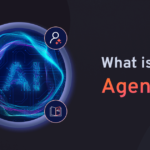Table of Contents

Introduction: Why You Should Use AI to Find Blog Post Topics
Bloggers and marketers today are in a competitive race to capture readers’ attention and drive traffic to their websites. The secret? Writing about topics people are actually searching for — but with a unique angle.
This is where AI (Artificial Intelligence) becomes your ally. AI tools can analyze data at a scale humans can’t, uncovering high-potential blog topics that align with search intent, trends, and SEO best practices.
In this post, we’ll show you how to use AI to find blog post topics that not only bring more traffic but also establish your E-E-A-T (Experience, Expertise, Authoritativeness, Trustworthiness) — crucial for ranking in modern search engines.
What Does E-E-A-T Mean, and Why It Matters
Before we dive into the AI tools, let’s quickly understand E-E-A-T:
- Experience — Share first-hand experience to make your content relatable and authentic.
- Expertise — Demonstrate deep knowledge about the topic.
- Authoritativeness — Be a trusted voice in your niche, referenced by others.
- Trustworthiness — Provide accurate, transparent, and credible information.
When you use AI to find blog post topics, the goal isn’t just to chase traffic — it’s also to select topics where you can deliver value aligned with E-E-A-T principles.
Benefits of Using AI to Find Blog Post Topics
Here’s why you should consider AI:
✅ Saves time by analyzing massive keyword and trend data.
✅ Reveals trending and untapped topics before your competitors.
✅ Suggests topics based on search intent and audience needs.
✅ Helps tailor topics to your expertise, supporting your E-E-A-T.
Now, let’s get into how you can actually use AI to find blog post topics that work.
Step-by-Step: How to Use AI to Find Blog Post Topics with High Traffic Potential
1️⃣ Use AI Keyword Research Tools
Keywords form the foundation of your blog topics.
AI-powered keyword tools like:
- Ahrefs (with AI)
- SEMRush Keyword Magic Tool
- Ubersuggest (by Neil Patel)
- ChatGPT (with proper prompting)
help you uncover what people search for, along with monthly search volumes and competition.
Example:
Suppose your niche is “vegan recipes.”
Instead of guessing, use AI to find variations like:
- easy vegan recipes for beginners
- vegan meal prep ideas
- vegan desserts without sugar
This aligns your content with what people want while ensuring you can realistically compete for traffic.
2️⃣ Tap Into AI Trend Analysis
AI tools can analyze social media and search engine trends to predict what’s gaining popularity.
Try:
- Google Trends + AI summarization
- Exploding Topics (by Brian Dean)
- BuzzSumo
These can show you rising queries like:
- AI for cooking
- plant-based diets for kids
- how to meal prep with AI
When you create content on emerging topics, you position yourself as an authority early, building E-E-A-T and traffic.
3️⃣ Use AI for Audience Research
Understanding your audience’s pain points and interests is key to finding high-potential blog topics.
Tools like:
- SparkToro
- AnswerThePublic (AI-powered)
- ChatGPT for persona generation
help you discover what questions people in your niche are asking.
Example prompt for ChatGPT:
“What are the most common questions beginners ask about vegan diets?”
You’ll get a list of real questions that can easily turn into blog posts.
4️⃣ Generate Content Gaps with AI
Look at your competitors and find what they haven’t covered — that’s your opportunity.
Steps:
- Use Ahrefs or SEMRush to analyze a competitor’s top pages.
- Feed their sitemap or blog titles into ChatGPT and ask:
“Identify gaps in topics that aren’t covered but relevant to this niche.”
Filling those gaps helps you stand out and build authority.
5️⃣ Combine AI Insights With Your Expertise
AI can give you data, but only you can bring your unique experience and expertise.
For each topic AI suggests:
✔ Add your personal experiences or experiments.
✔ Share actionable tips and original examples.
✔ Cite credible sources and link to authoritative sites.
This is critical for demonstrating E-E-A-T and ensuring your posts don’t just blend into the noise.
Best Practices to Use AI Effectively (and Ethically)
When using AI to find blog post topics, keep these best practices in mind:
- Don’t blindly follow AI suggestions — evaluate them for relevance and accuracy.
- Prioritize topics you can confidently write about with authority.
- Don’t overuse AI-generated text without adding human insight.
- Verify data from multiple sources to maintain trustworthiness.
Example Workflow: Using AI to Find Topics in 15 Minutes
Here’s a quick blueprint you can replicate:
✅ Open SEMRush Keyword Magic Tool → Find 20 keywords with moderate competition & decent search volume.
✅ Check Google Trends to see which keywords are gaining momentum.
✅ Run competitor URLs through Ahrefs → identify content gaps.
✅ Use ChatGPT to turn keywords + gaps into blog post ideas & outlines.
✅ Select 3–5 topics that align with your expertise and audience needs.
How This Strategy Boosts E-E-A-T
By combining AI with your own knowledge:
- You write about what you’ve experienced (Experience).
- You showcase your understanding of the subject (Expertise).
- You fill gaps & publish unique insights, earning backlinks & mentions (Authoritativeness).
- You provide accurate, verifiable information (Trustworthiness).
This makes your blog a reliable resource, improving your search engine rankings and audience trust.
Conclusion: Make AI Your Co-Pilot, Not Your Pilot
AI is a powerful tool to uncover high-traffic blog topics, but it should complement — not replace — your expertise.
When you use AI to find blog post topics, always filter the suggestions through your E-E-A-T lens. Write what you know, enrich it with data, and keep your readers’ needs front and center.
Start today: pick one AI tool, research your niche, and brainstorm a list of blog ideas that you’re excited to write — and that your audience is eager to read!









3 thoughts on “How to Use AI to Find Blog Post Topics with High Traffic Potential”